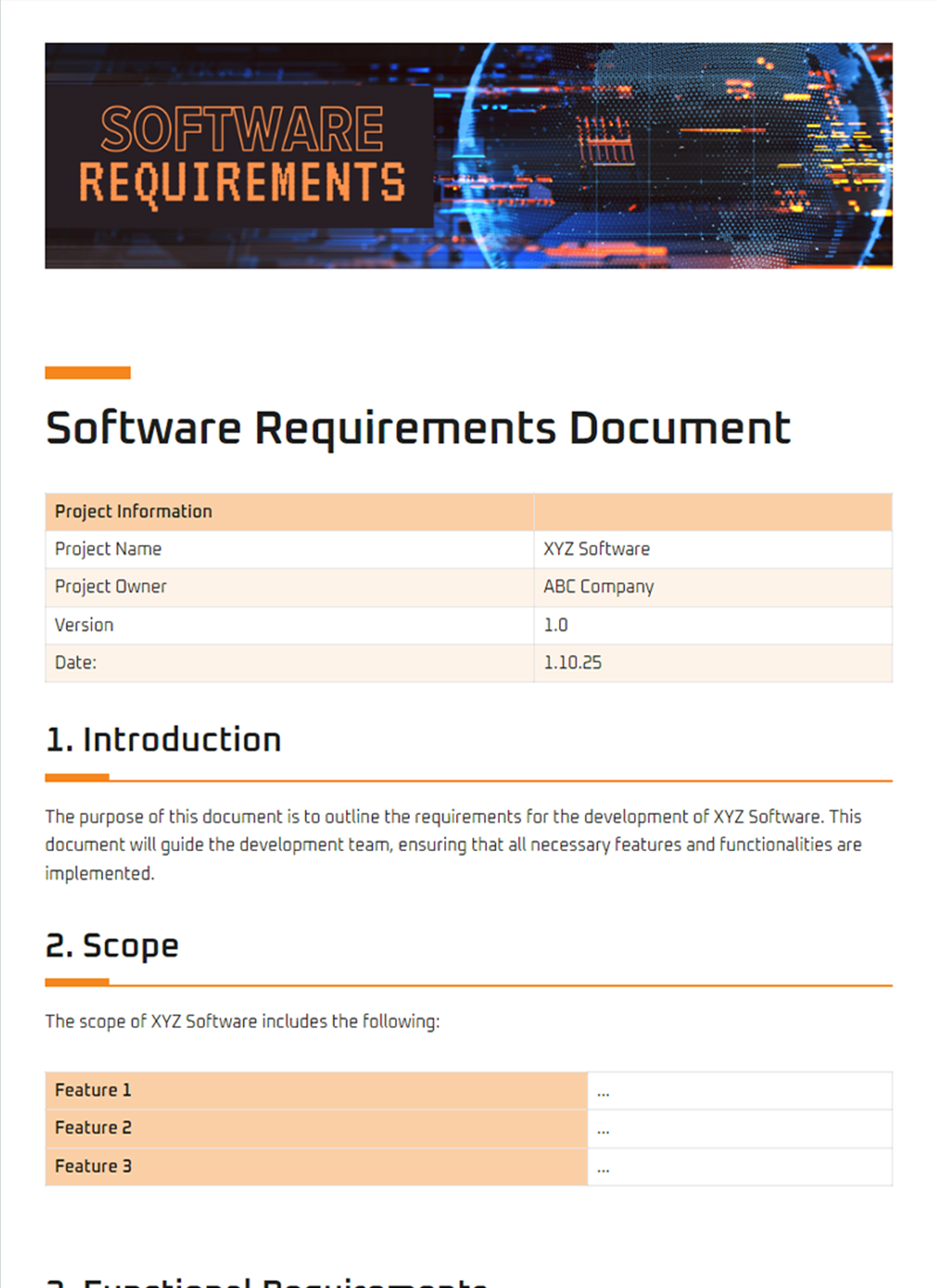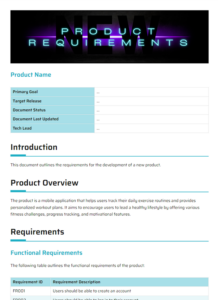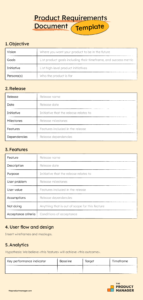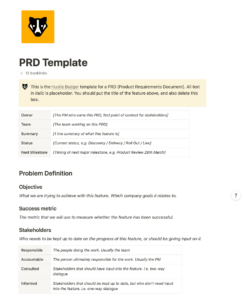A program requirements document (PRD) is a critical document that outlines the goals, scope, and functionality of a software program. It serves as a roadmap for the development team, ensuring that the final product meets the needs of the stakeholders. Creating a well-structured and comprehensive PRD is essential for the success of any software development project.
There are many benefits to using a program requirements document template. It can help you to:

- Organize your thoughts and ideas
- Ensure that all stakeholders are on the same page
- Identify and mitigate potential risks
- Track the progress of the development project
What Should a Program Requirements Document Template Include?
A PRD template should include the following sections:
- Introduction: This section provides an overview of the program, including its purpose, scope, and goals.
- Stakeholders: This section identifies the stakeholders involved in the project, including their roles and responsibilities.
- Requirements: This section outlines the functional and non-functional requirements of the program. Functional requirements define what the program must do, while non-functional requirements define how the program must perform.
- Use Cases: This section describes the different ways that users will interact with the program.
- Acceptance Criteria: This section defines the criteria that must be met in order for the program to be considered complete and successful.
- Risks: This section identifies the potential risks associated with the project and outlines mitigation strategies.
- Timeline: This section provides an estimate of the time required to complete the project.
- Budget: This section outlines the budget for the project.
- Glossary: This section defines any technical terms or acronyms used in the PRD.
- Appendices: This section includes any additional documentation, such as prototypes, wireframes, or mockups.
How to Use a Program Requirements Document Template
To use a PRD template, follow these steps:
- Gather information: Before you begin writing the PRD, gather information from the stakeholders involved in the project.
- Identify the requirements: Once you have gathered information, identify the functional and non-functional requirements of the program.
- Write the PRD: Use the PRD template to write the PRD. Be sure to include all of the relevant information, such as the introduction, stakeholders, requirements, use cases, acceptance criteria, risks, timeline, budget, glossary, and appendices.
- Review the PRD: Once you have written the PRD, review it carefully to ensure that it is complete and accurate.
- Get feedback: Share the PRD with the stakeholders involved in the project and get their feedback.
- Finalize the PRD: After you have received feedback, finalize the PRD and distribute it to all stakeholders.
Conclusion
Using a program requirements document template can help you to create a well-structured and comprehensive PRD. This will ensure that the final product meets the needs of the stakeholders and that the project is completed on time and within budget.
Remember, a PRD is a living document that should be updated throughout the development process. As the project progresses, new information may be discovered and new requirements may be identified. It is important to keep the PRD up to date so that it remains an accurate reflection of the project.


